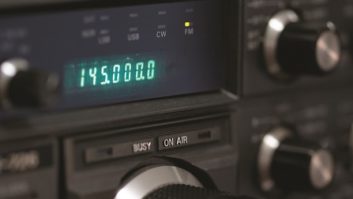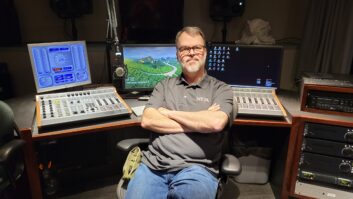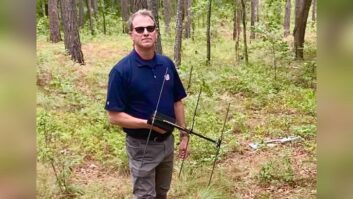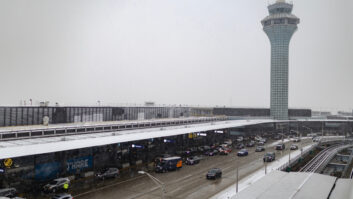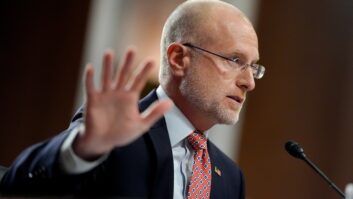Broadcast engineers are becoming more aware of the impact of environmental radio noise on reception. The recent efforts at “AM improvement” have highlighted this challenge to AM stations, and evidence is growing that reception on FM and TV bands is being impaired as well.
The general public, however, is far less aware of our growing noise pollution issue. Listeners or viewers may not know why there is a reception problem; they just perceive the signal as “weak” and may switch to a competitor. Broadcasters are hearing a common pattern in listener complaints: “I used to get good reception, but not anymore…” I wrote about this in Radio World in a 2011 article titled “Johnston Laments FM Noise.”
Other industries using RF wireless technologies report growing noise trouble as well. A recent IEEE Spectrum article was subtitled “Electronic Noise Is Drowning Out the Internet of Things.” Designers of IoT devices are not getting the range they expect due to unexpectedly high background noise, it reported.
Recent broadcast engineering conferences have included presentations on the noise problem. The topic was extensively covered at last fall’s IEEE Broadcast Technology Society Fall Symposium; four presenters focused on the subject of “man-made RF noise issues.”
FCC TAC INQUIRY
Growing awareness of the problem of excessive radio noise in the environment last year led to the FCC’s Technical Advisory Council forming a working group to study the problem. Inquiry ET-16-191, released in June 2016, sought public comments.
The responses came from about 100 individuals, companies and organizations, from a broad array of RF users including broadcasters, equipment manufacturers, consulting engineers, radio astronomers, amateur radio groups and users of other spectrum services such as cellular, GPS and public safety communications. Industries often blamed for interference were also represented. Fig. 1 lists some of those that offered comments.
Commenters cited radio noise sources such as power lines, modern lighting systems, switching power supplies, motor speed controllers and cable TV leakage. Several respondents pointed out that these devices needn’t cause interference problems if designed properly. Unfortunately, too many seem to not meet that standard.

Fig. 1: A partial list of commenters to the FCC’s Technical Advisory Council.
Twenty respondents had concrete suggestions for study methodologies. Nineteen comments specifically called for more effective enforcement of current regulations. And respondents were virtually unanimous in calling for an official noise study.
RECOMMENDATIONS
In December, the TAC Working Group recommending important steps for the FCC to tackle the problem of excessive ambient radio noise. The primary recommendation is that the FCC should issue a Notice of Inquiry or Notice of Proposed Rulemaking to resolve unanswered questions and take corrective action. Fig. 2 shows some of the questions to be addressed to further characterize the noise issue.

Fig. 2: Some questions to be addressed to characterize the noise issue further.
In addition, the TAC Working Group raised several enforcement concerns:
● There is evidence that devices claimed to be “FCC compliant” were actually never tested, or the design was cost-reduced after they were tested, leading to non-compliance in delivered products.
● The FCC enforcement bureau needs to stop the manufacture and important of non-compliant switching power supply “wall warts,” LED and CFL lights, and other products.
● The current FCC limits must be enforced effectively to stop the rapid rise in the noise floor across the spectrum before the problem becomes completely unmanageable.
On April 11, 2017, representatives of the Association of Federal Communications Consulting Engineers met with FCC Chairman Ajit Pai to discuss the problem of the rising radio noise floor, according to Tom King, president and CEO of Kintronic Labs and a member of the association.
These respected engineers reviewed the nature of the problem with the chairman and made a strong case for enforcement of regulatory limits on noise. The group’s recommendations covered both the rising noise floor issue and enforcement challenges.
AFCCE stated that:
● There has been no systematic study of RF noise since the 1970s.
● Many radio services are being compromised due to the rising noise floor.
● “Internet of Things” system performance is suffering due to the background noise.
● The FCC should re-establish the random sampling program to test products for compliance.
● The FCC should stop turning a blind eye toward “at variance” practices.
GUIDANCE … FROM 1993?

The commission’s current offering to consumers on this topic is the “FCC Interference Handbook.” But it was published in 1993 — 24 years ago.
The AFCCE presentation made one final point: The commission’s current offering to consumers experiencing interference is the “FCC Interference Handbook.” This booklet is offered online but was last updated in 1993 and is long out of date. The group encouraged the commission to update this important document and create an online portal for submission of interference complaints.
“We are fortunate to have an FCC chairman who is pro-broadcast and appears to be receptive to our concerns.” Tom King said. But as of mid-June there’s no word so far from the commission in response to the recommendations of the TAC Working Group or the AFCCE representatives’ meeting with Chairman Pai.
Steve Johnston has 35 years’ experience in broadcast engineering and now consults on projects worldwide. He was among those submitting comments on FCC Inquiry ET-16-191.
